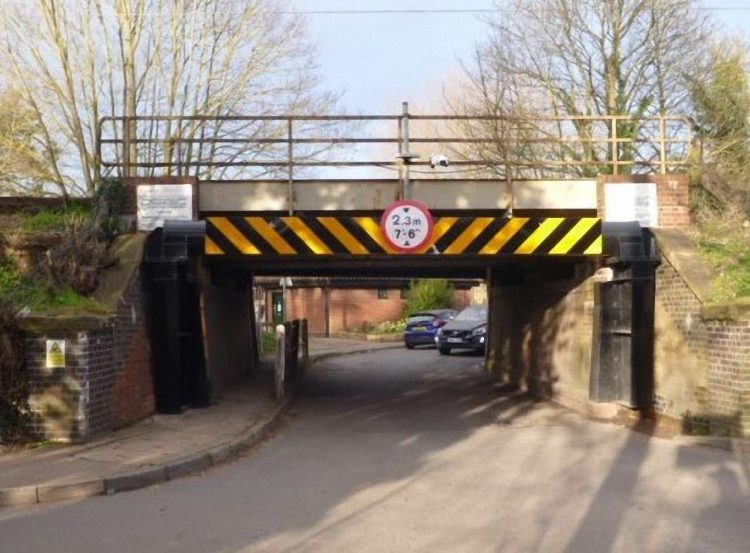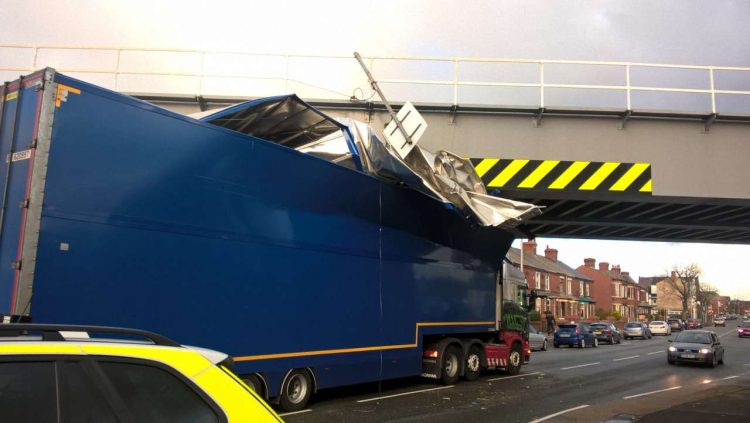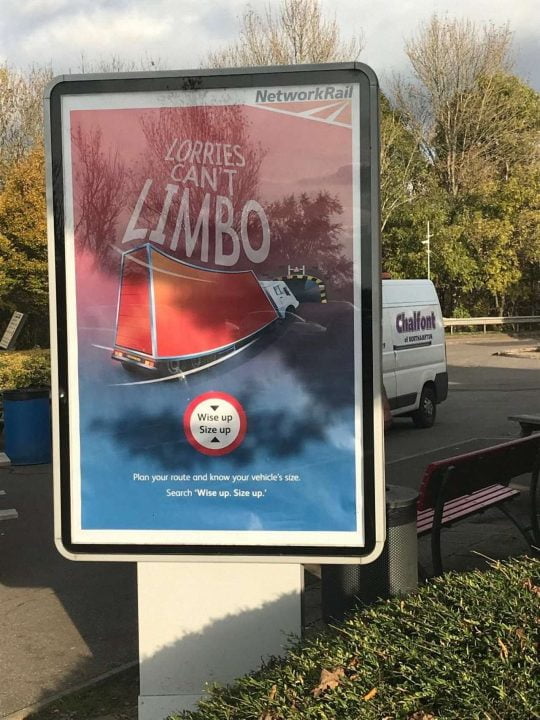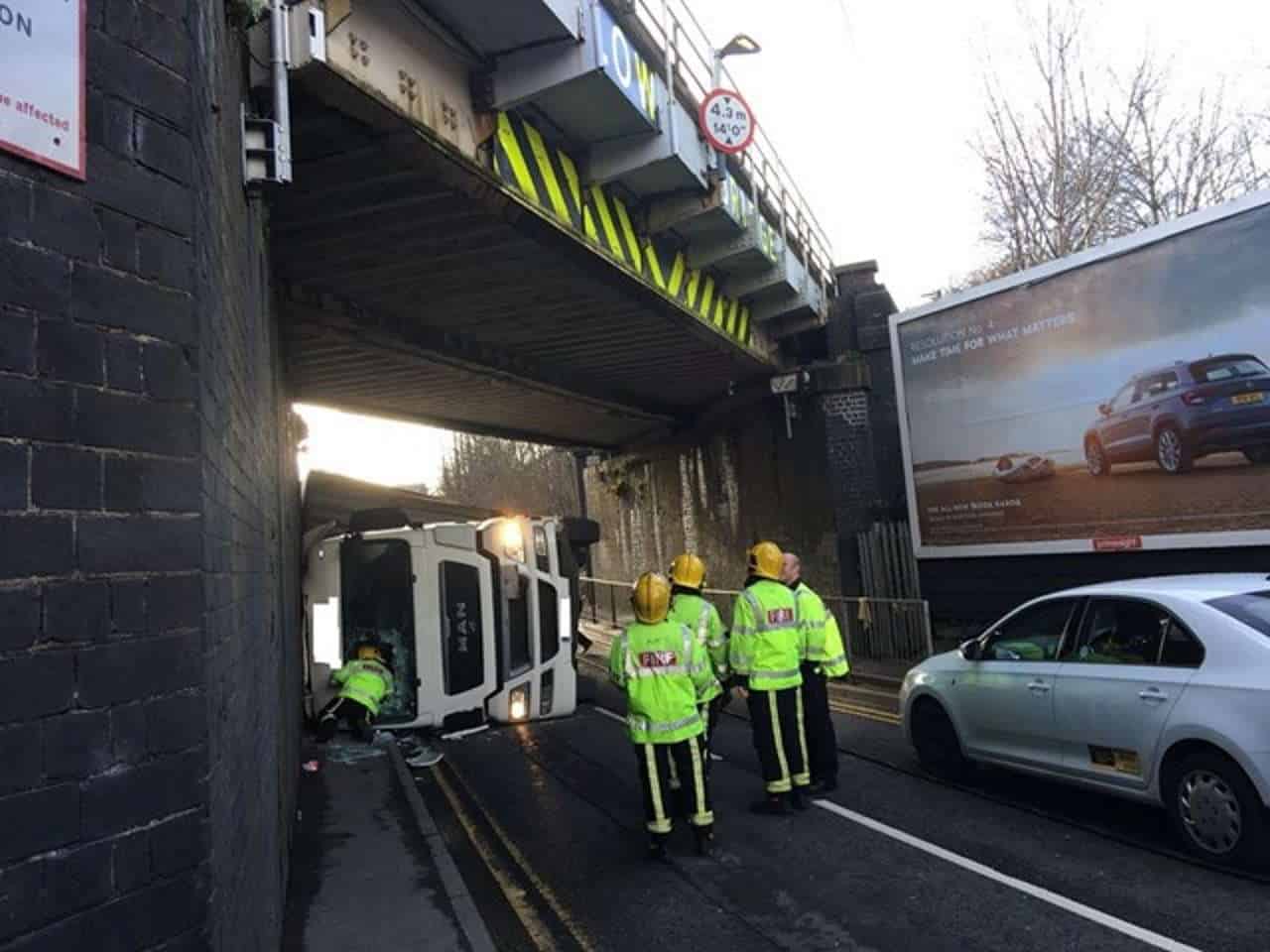Network Rail has revealed the most-struck railway bridges in the country.
The bridge that bears the unwanted title of the most bashed bridge in Britain is the Coddenham Road bridge on the B1078 in Needham Market, Suffolk.

Last year, the bridge was struck 19 times. which cost £41,331 for unnecessary train delays and cancellations. Other bridges that were struck multiple times include St. John’s Street bridge in Lichfield, Staffordshire, struck 18 times, and Harlaxton Road bridge, in Grantham, Lincolnshire, struck 16 times.
In an attempt to minimise future bridge strikes, Network Rail has re-launched its ‘Wise Up, Size Up’ campaign. This is intended to remind lorry drivers and haulage operators that they should know the height of their vehicles before they set out on their journeys, and to choose routes suitable for their vehicle’s height.

Network Rail is also running a 4E’s initiative. The four Es – education, engineering, enablement and enforcement – aim to ensure haulage companies and their drivers are provided with the knowledge and tools they need to avoid striking bridges. To support the initiative, Network Rail has a team of bridge strike ‘champions’ who cover each route across Britain.
The teams visit haulage companies to raise awareness of the problems caused by bridge strikes, and take the lead in managing bridge strike risks locally.
Over the next four weeks, reminders to ‘Wise Up, Size Up’ will feature on posters at motorway service stations across Britain, urging drivers to check the size of their vehicles and their routes before setting off.

We are now approaching what is traditionally the peak period for bridge strikes – the annual Black Friday and Christmas shopping rush. This year, Network Rail’s campaign is more important than ever, as there will be more newly qualified lorry drivers on Britain’s roads to fill an estimated shortage of 100,000 drivers according to a Road Haulage Association survey of its members.
Sir Peter Hendy CBE, chair of Network Rail, said: “Bridge strikes cause unnecessary delays, costs, and safety issues for road and rail users. To compound matters, they drain public funds which should be used on upgrading and improving our network. In recent years we’ve done a lot of work with partners across the industry to tackle the problem and whilst it’s encouraging to see numbers on the decline, there’s a lot more work to be done.
“With Black Friday and Christmas fast approaching, we urge professional operators and drivers to properly plan their routes, know the height of their vehicles and look out for road signs warning of oncoming bridges. Those who don’t are at risk of losing their driver’s and operator’s licences, and Network Rail looks to recover the entire repair and delay costs from the driver’s employer.”
Most struck railway bridges in Britain 2020/21:
- Coddenham Road Needham Market, Suffolk 19 strikes
- St John’s Street Lichfield, Staffordshire 18 strikes
- Harlaxton Road Grantham, Lincolnshire 16 strikes
- Stuntney Road Ely, Cambridgeshire 15 strikes
- Bromford Road Dudley, West Midlands 13 strikes
- Watling Street Hinckley, Leicestershire 11 strikes
- Warminster Road Wilton, Wiltshire 11 strikes
- Ipswich Road Manningtree, Essex 10 strikes
- Thames Street Staines-upon-Thames, Surrey, 10 strikes
- Lower Downs Road Wimbledon, London, 10 strikes
Bridge strikes reported across the railway network in the last five financial years:
- Year 2016/17 – 1,878 strikes
- Year 2017/18 – 2,039 strikes
- Year 2018/19 – 1,926 strikes
- Year 2019/20 – 1,720 strikes
- Year 2020/21 – 1,624 strikes
Where Next on RailAdvent?
Subscribe for More
Railway News
DVDs, Prints, Cards & gifts
MAINLINE STEAM INFO
Competition Time!
COMMUNITY PHOTOS
FREE NEWSLETTERS





Responses
How long before a railway bridge is damaged so severely that a derailment occurs and loss of life results? HGV drivers who don’t know/don’t care about the route they take or the height of their vehicle or the damage they cause should feel the full force of the criminal law, as should their employers. Bridge strikes should be treated as criminal damage, automatically leading to loss of the driver’s licence and scrapping without compensation of the vehicle involved. Five-figure fines and jail sentences should be imposed in serious cases. None of that should prevent the possibility of civil action by those affected for damage and distress caused by the incident and for consequential losses (eg delays and disruption to rail and road journeys, closure of streets, police and emergency services’ costs, structural effects on nearby property etc). The only possible excuse would if a bridge’s height had been displayed inaccurately (+5% or more) on official notices.
There has been a large banner saying Low Bridge on the Lower Downs bridge for years but still some drivers don’t know the size of their vehicle. Apparently recently they had just cleared one vehicle and another one hit